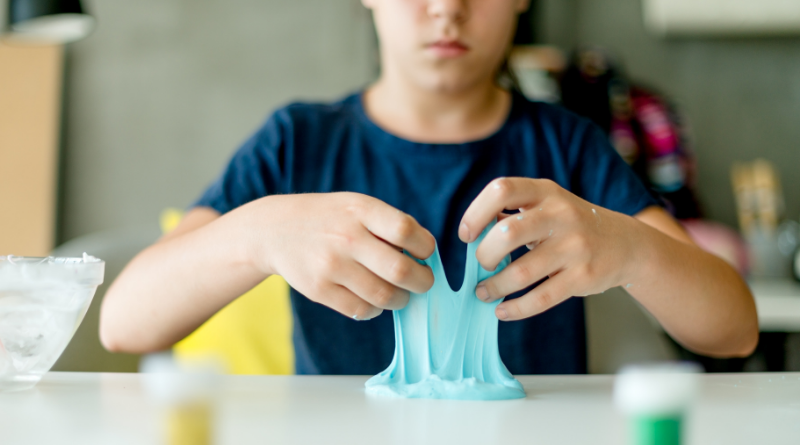
STEAM Connections: Slime Time
We’re getting sticky with this science project: making glittery and fluffy slime!
During this experiment, you will learn about polymers, viscosity, and what goes into making slime. Slime is a great way to introduce measuring, chemistry and art to your child. You can experiment with different quantities of optional materials, and discuss about how different materials
change the texture.
Add fun to your experiment by trying new ingredients, like beads, rice, flour or mixing multiple food colors! Below is our video as we show you how to make two types of slime, with a printable handout, supplies and written instructions following.
Download the handout for Slime Time to print:
Supplies
• Saline Solution (contact lens solution)
• Glue
• Baking soda
• Mixing bowl
• Popsicle stick
• Glitter (optional)
• Food coloring (optional)
• Shaving cream (optional)

Instructions
- Grab a mixing bow (or re-sealable bag) and gather supplies
- Measure out 4 tablespoons- 1/4 cup of glue into your container
- Add 1/4 teaspoon of baking soda
- Add desired quantity of any optional ingredients
Glitter- as much as desired
2-3 drops of food coloring (add more for stronger color)
Shaving cream- as much as desired - Add 1/2 tablespoon of saline solution to the mixture
- Mix together with popsicle stick or hands
Continued Learning
Below are a list of various resources available at Plano Public Library with your library card to expand your knowledge on slime and all things chemistry.

eBooks
Slime 101: How to Make Stretchy, Fluffy, Glittery & Colorful Slime! by Natalie Wright eBook
Oh, Ick! 114 Science Experiments Guaranteed to Gross You Out! by Joy Masoff and Jessica Garrett eBook
Ace Your Science Project Using Chemistry Magic and Toys by Robert Gardner eBook
Horrible Science: Chemical Chaos by Nick Arnold and George Wilson eBook
Why Is Milk White? & 200 Other Curious Chemistry Questions by Alexa Coelho and Simon Quellen Field eBook
Databases
Science in Context – GALE: contextual information on science topics showing how disciplines relate to real-world issues, from weather patterns to obesity
Science Online: broad range of scientific disciplines through essays, videos, biographies and experiments




